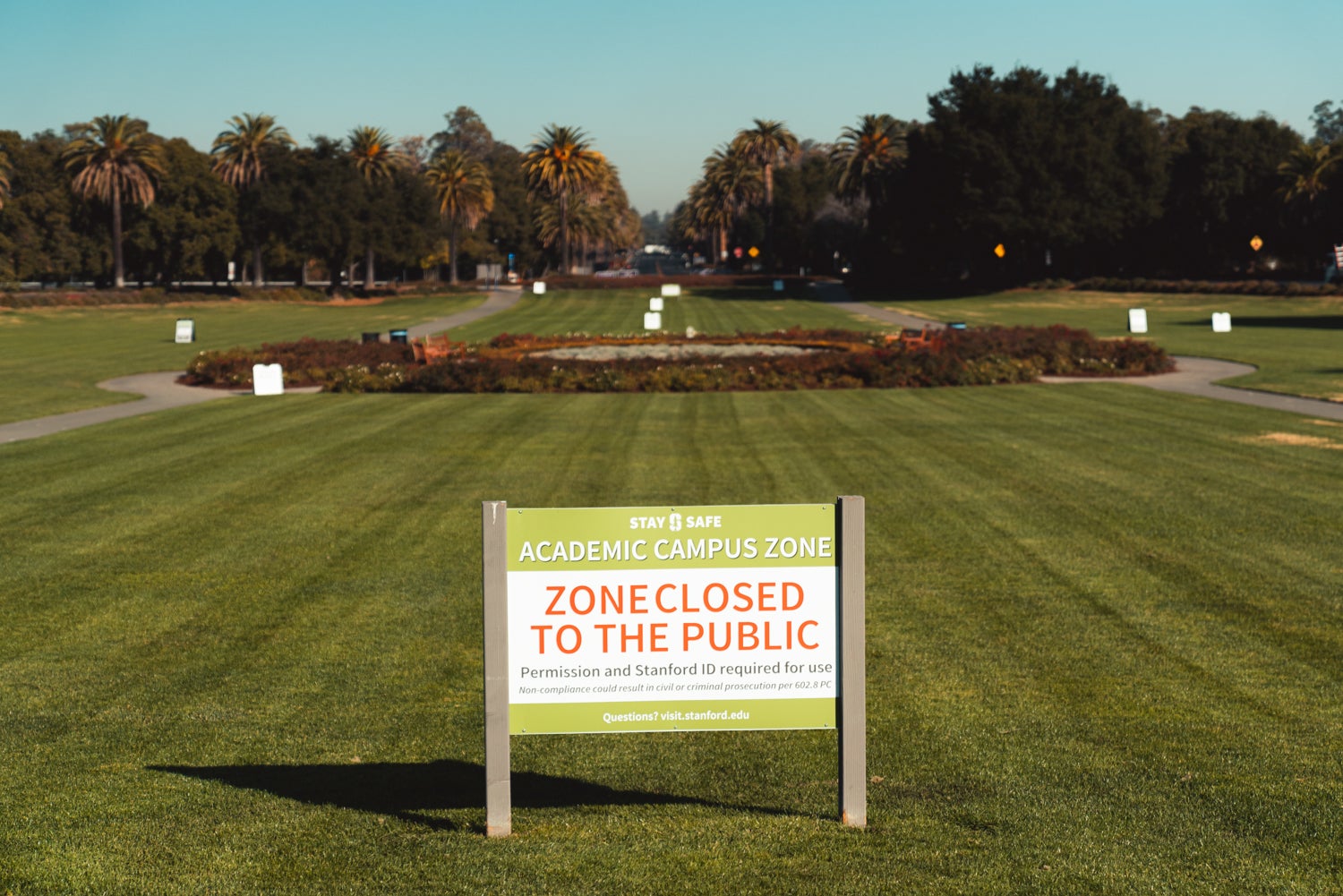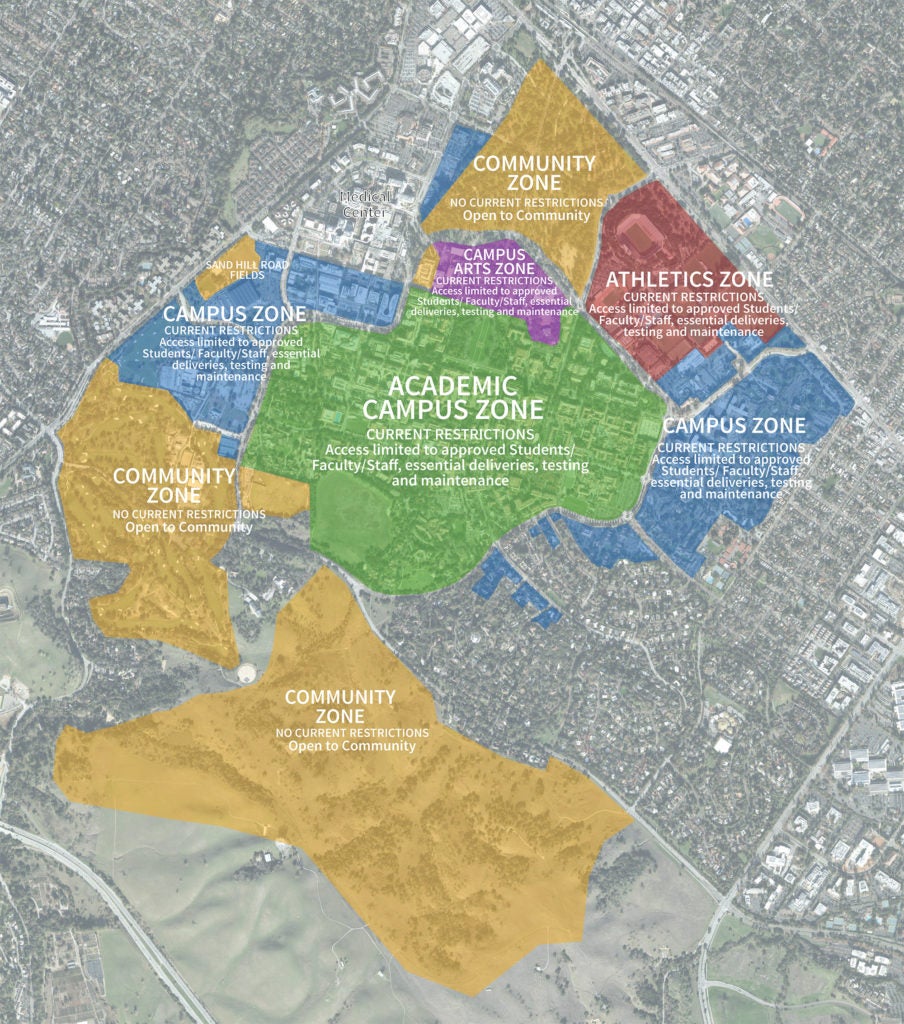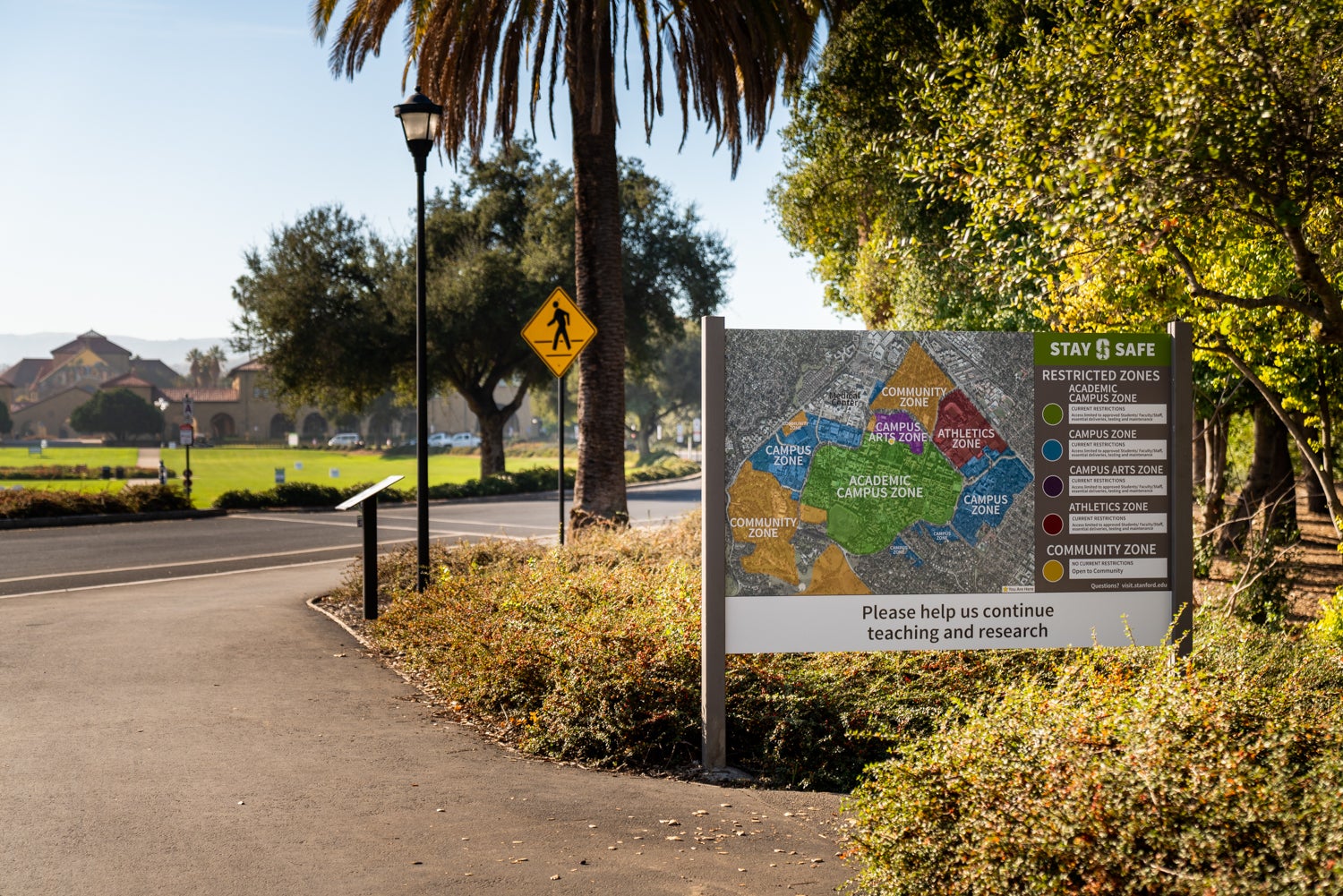Stanford introducing Safety Greeters to support campus health and safety efforts
The university is placing greeters at popular areas around campus, starting with the Oval, to further help educate visitors and the campus community on access restrictions and necessary protocols for limiting the spread of COVID-19.
The “Red Coats” you see at Cardinal athletic and other events soon will have a new role: helping provide information about Stanford’s campus zones program and COVID-19 safety protocols in high-traffic areas of the campus, in response to the alarming rise in the prevalence of COVID-19 in the Bay Area and beyond.

Safety Greeters will educate campus visitors who enter certain locations about the temporary zones program that currently restricts public access to areas of the main campus. (Image credit: Andrew Brodhead)
During the initial pilot phase, the Red Coats, acting in their new capacity as Safety Greeters, will focus primarily on educating any visitors who happen to enter certain locations about the temporary campus zones program that currently restricts public access to different areas of the main campus where almost all academic, residential, cultural and athletic facilities are located. They will also be an information resource for campus community members and approved visitors navigating COVID-19 pandemic-related health measures on campus, such as protocols for gatherings, physical distancing and the use of face coverings.
After announcing plans for the campus zones program in early September, the university listened to campus and community feedback about the program and quickly suspended a planned requirement that members of the campus community visibly display a Stanford ID when in restricted zones, instead relying on signage, information and restrictions on parking for visitors. Stanford carefully studied the results of that initial approach to the campus zones and designed the Safety Greeter program to reinforce the effectiveness of the zones program in reducing unplanned interactions between visitors and the campus community in a way that is responsive to community feedback.
The university also consulted with student leaders and the co-chairs of the Community Board on Public Safety – Patrick H. Dunkley, deputy athletic director in Stanford Athletics, and Claude M. Steele, the Lucie Stern Professor in the Social Sciences, Emeritus, in the School of Humanities and Sciences – about the goals, design and implementation of the program.

A map of Stanford’s main campus showing the locations of, and current restrictions in, different campus zones. Click map to enlarge. (Image credit: Land, Buildings and Real Estate)
The greeters will focus on being visible and accessible in popular gathering places and other high-traffic areas to provide information about the zones program. They will have small stations set up with postcards that describe the campus zones program, and will be available to answer questions and direct people to resources with additional information. However, they will not enforce campus rules, and they will not check for Stanford IDs or otherwise attempt to proactively determine whether or not individuals are authorized to be in restricted campus zones.
Stanford is continuing to ask visitors to voluntarily abide by campus zones restrictions and is doubling down on education about the zones rather than penalties for noncompliance. The university designated Community Zones that encompass the Arboretum, the Dish area, Stanford Golf Course and Stanford Golf Learning Center & Driving Range, and the Sand Hill Fields that remain open to the public to ensure that the local community can continue to enjoy some campus lands. In-person public events are not currently allowed on campus, although many have been converted to virtual experiences, including Continuing Studies.
As health conditions continue to change on campus and in the surrounding communities, so may the role of the Safety Greeters. Should conditions deteriorate, they may be called on to engage more proactively in order to educate individuals not complying with rules governing physical distancing, gatherings and the use of face coverings. Even if their roles do evolve, Safety Greeters will always prioritize education over enforcement.
While the Safety Greeter program is new, it is composed of university personnel already well-known to many. The university has trained members of the “Red Coats,” who already work as Guest Services staff members at athletic events and are easily identified by their trademark bright red jackets, to serve in this new function. Their preparation for the role included training developed by the National Conflict Resolution Center on the practice of inclusive communication.
“We’re delighted that many of the Red Coats, who have already developed a strong rapport with the Stanford community and many of our neighbors, are taking on this new role,” said Ray Purpur, deputy athletic director, who is overseeing the Safety Greeter program. “We hope everyone will look to the Safety Greeters as an educational resource as conditions on campus evolve in response to the pandemic.”

Safety Greeters will be positioned at the top of the Oval beginning Dec. 18, and personnel will be added in the Main Quad, White Plaza, Meyer Green and the athletics area along El Camino Real near Churchill Avenue in mid-January. (Image credit: Andrew Brodhead)
A couple of Safety Greeters will be positioned at the top of the Oval beginning Dec. 18, and personnel will be added in the Main Quad, White Plaza, Meyer Green and the athletics area along El Camino Real near Churchill Avenue in mid-January.
The Safety Greeters serve a distinct, but complementary, role to the Safety Ambassadors already present on campus and distinguishable by their green vests. The Safety Ambassadors are focused on monitoring, which they do by walking around outdoor areas of the academic portion of the main campus to check building signage and document compliance with Santa Clara County guidelines and the efforts for safe return through the stages of the campus recovery process. In contrast, the Safety Greeters will be focused on engagement and education to assist individuals with meeting state, county and university health and safety requirements.
The Stanford Visitor Information website offers answers to frequently asked questions about the campus zones program. More information about Stanford’s phased recovery process is available on the Cardinal Recovery website. It details the university’s plan for returning people to campus and covers a range of topics, from general guidance to health information to building management tools. Important COVID-19 updates for the campus community continue to be provided through the Health Alerts website.